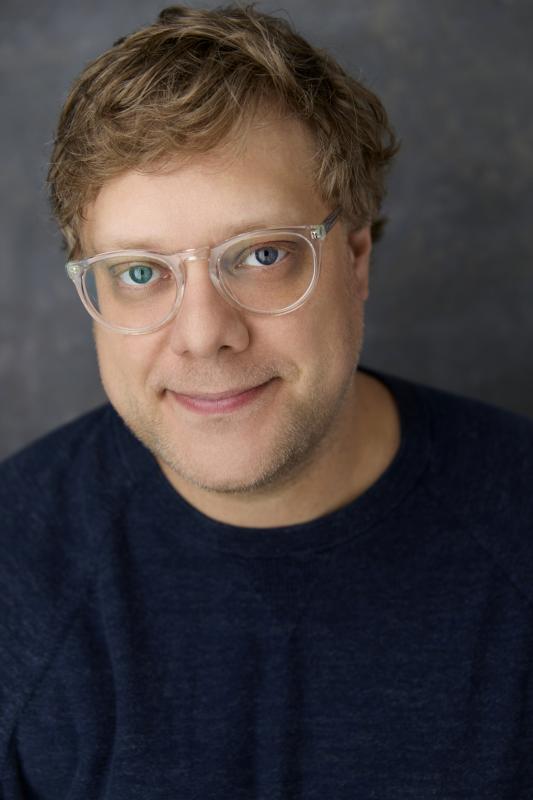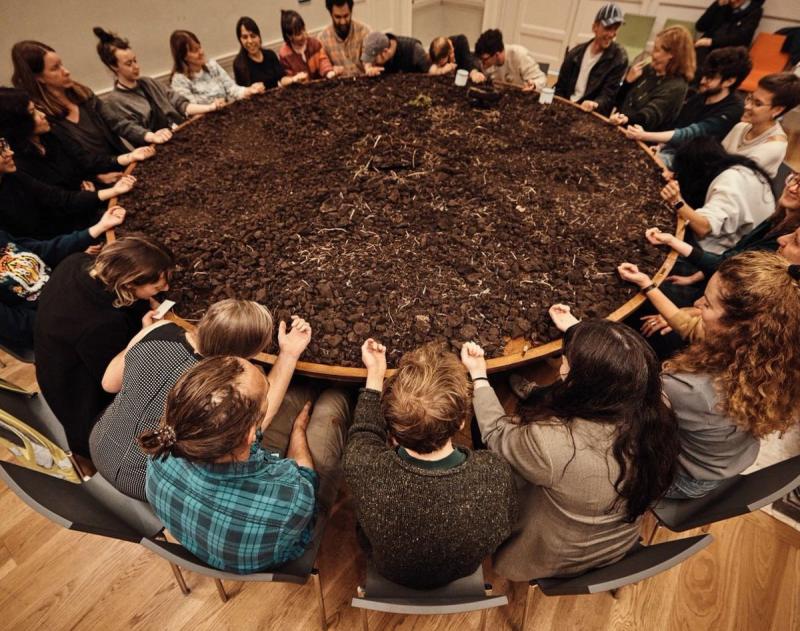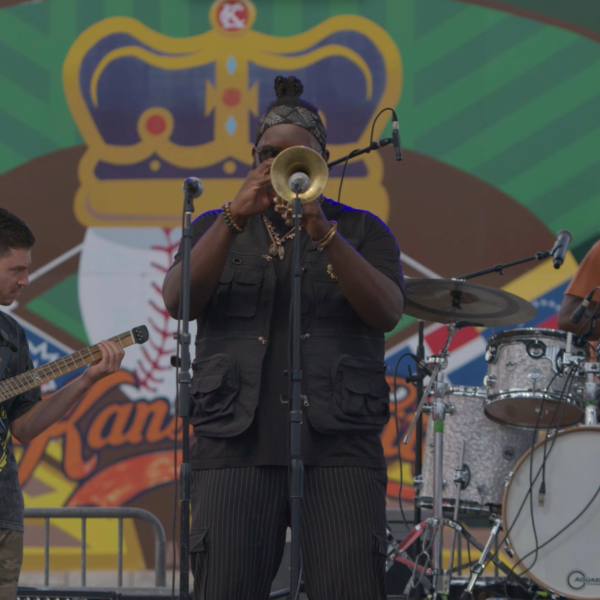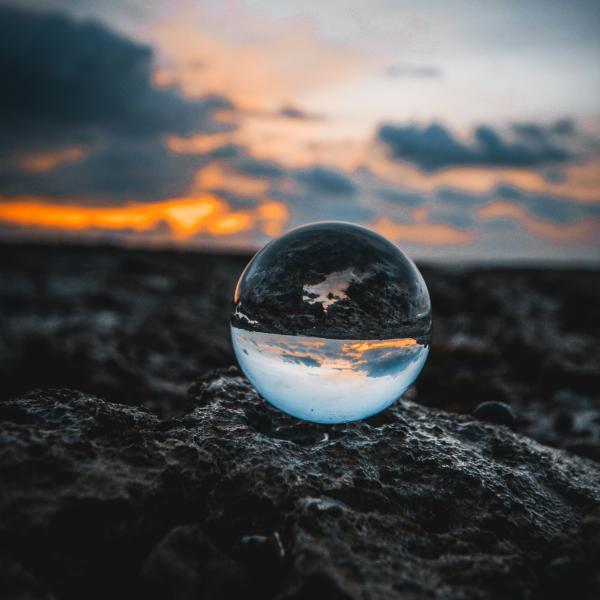The Artful Life Questionnaire: Andrew Dolan

Andrew Dolan, executive director of Solas Nua. Photo by DJ Corey
What we know for sure: We all have a story, and engaging with the arts helps all of us to tell our own stories on our own terms. We also know that there are ways to engage with the arts other than in formal cultural venues, and that sometimes it is more about the process of art making than it is about the end product. We also know that living an artful life, which is to say, living a life in which the arts and arts engagement are a priority means different things to different people based on their own interests, their communities, and many other factors, including equitable access. The Artful Life Questionnaire celebrates the diversity of ways we can make the arts a part of our lives, and, hopefully, inspires and encourages us to live our own unique versions of an artful life. In today’s edition of the questionnaire, we’re speaking with Andrew Dolan, executive director of Solas Nua (“new light” in Irish), a multidisciplinary arts organization in Washington, D.C., dedicated exclusively to contemporary Irish arts.
NEA: Please introduce yourself.
ANDREW DOLAN: Hi, I'm Andrew Dolan. I'm the executive director of Solas Nua, an Irish arts organization based here in Washington, D.C.
NEA: Do you have a current art practice or a way of regularly engaging with the arts?
DOLAN: I have been a producer and fundraiser for the last 15 years, working primarily in dance and community arts. My training is as a theater director, and I try to fit that in when I can. Now that I'm at Solas Nua, I produce dance, theater, film festivals, literature events, music, and everything in between. Solas Nua works with 20 or 30 Irish artists here in D.C. each year.
I have a practice of creating sound designs and composing music for performance and media, whenever friends need it. I used to do a lot more freelance sound design work, but now I'm really grateful to be leading Solas Nua, and sound work has become a place of joy that I can give to my collaborators.
NEA: What are five words that come to mind when you think about the idea of living an artful life?
DOLAN: Presence, giving, gratitude, risk, and the unknown.
NEA: Pick just one of those words and expand on how you see it as part of living an artful life.
DOLAN: Presence. For me, an artful life is, in part, holding the openness to be able to either create or experience. [You need to] have the emotional availability to allow for whatever the experience is to guide, change, and transform where you might be at in that moment. I think that readiness comes from being present.
NEA: Where do you currently live, and what are some of the ways that your community tells its story through the arts or through creative expression?
DOLAN: I currently live in Washington, D.C. Since Solas Nua works with contemporary Irish artists, my focus is split between what’s happening in Ireland, the intersections between Irish art and D.C. communities, and the interests of the larger Irish diaspora across North America.
Community, in the context of my current artistic work, shifts with each project or city, but there is a strong through line of Irish culture. Personally, the Dolan side of my family came from Castlederg, a small town in County Tyrone, in the 1840s. They settled in Minnesota in the 1850s, and have been farming there ever since. I grew up with a large extended family who celebrated our Irish roots and prioritized gathering, storytelling, and music. I also lived in Ireland while I was getting a master’s degree from the University of Galway, and it was in Galway where I started working with Irish artists as a producer, director, and sound designer. Irish culture has truly shaped who I am today.
But, what is Irish culture? There are histories and cultural practices that artists draw from, but today’s Ireland is globally diverse with changing demographics, while also having one of the largest diasporas of any country. Contemporary Irish culture is an intersection of communities across borders, ethnicity, and economic lines. And at the same time, Irish culture is hyperlocal. For instance, Limerick and Cork are 90 minutes apart, but they have different sets of everyday slang. So, in terms of community and story, I don’t know if there is any way to be specific, other than that we have an amazing group of directors and producers at Solas Nua, both Irish and American, who are working to continually elevate this intersectionality and find ways to get a multitude of artistic voices out to the diaspora and to other folks who like contemporary work.
NEA: How do you think that living an artful life can improve the well-being of your community?
DOLAN: Artists are trying to respond to a rapidly changing world, and we have people who are hungry for live communal experiences. A lot of the work that I've done, and I want to keep doing, is to make space for us to come together. The impulse is there on both sides—to create and to experience. But how do we continue to nurture those third places where people can pop in and have an engagement with an artist who's trying to cut through the day-to-day life with something that encourages empathy or a different perspective? It’s in gathering with artists in third places that we can share in an artful life and develop a shared sense of empathy.
NEA: Is there a particular place in your neighborhood that is a creative touchstone for you?
DOLAN: Yes, Eaton DC! It’s a hotel, but it's also a coffee shop and a bar and a cinema and a co-working space and an arts space and a community gathering place and a curated equivalent of a modern art museum, complete with visual art shows, live music, performance, films, talks, classes, and more. It’s truly the answer to the question, “what does a business look like if it embraces creativity, community, and collective betterment?” Solas Nua has a beautiful performance piece there that opens soon by the artist Luke Casserly entitled Distillation. We commissioned it, and we are co-producing it with the Abbey Theatre, the national theatre of Ireland. The show is 25 people sitting around a table talking about, how do we heal our landscapes, and how does that intersect with the communities that surround our landscapes? Luke is using his experience, having grown up on the bogs of Ireland, to ask this question to communities in Ireland. We're bringing it to D.C. and then we're sending it on an East Coast tour, and then up to Toronto. Luke approaches landscape and healing with a personal and artful touch. He actually worked with a perfume artist to distill the botanicals of the Irish bog, and everyone gets to smell this perfume. They get to leave with a bottle of this perfume, as an invitation to please continue to consider your relationship with nature around you, and how are we all working to make sure that we're caring for this planet.

Production of Distillation. Photo by Patricio Cassinoni
NEA: Can you share an arts experience or moment of arts engagement that has had an identifiable impact on your life?
DOLAN: I will travel a thousand miles or more to see anything that Romeo Castellucci [the Italian theater director] has created. I have never been more challenged in a room than with the images that he creates. In Dublin in 2004, I was fortunate to see one of the episodes in his Tragedia Endogonidia series. For a piece that was artfully mastered, completely sound in concept, and yet still have 30 plus audience members get up and leave because it was…it was hard. It was disturbing. But the work was exploring modern tragedy, police violence and brutality, and the visceral imagery of that show sticks with me today, even after 20 years. It has changed my landscape of empathy, and I left with a completely different understanding of the possibilities of live performance. I think about his work often.
NEA: What’s your favorite informal way or space to engage with arts and culture?
DOLAN: I have a practice where, each week, I set aside time to take in new work that has been just released. For example, I try to listen to as many new releases as possible, using Apple’s New Music Daily playlist and whatever I can find on BBC Radio 1. I try to open my mind and heart to every song across genres, try to combat any sort of favoritism, and work to bring gratitude and openness to an artist who has birthed something new into the world. I want to be present for that moment. Similarly, with video games, I try to play the first hour or two of every video game I can get my hands on, working to understand how folks are advancing narrative storytelling.
This is, of course, paired with seeing live performance here in D.C. as well as catching up on the premieres, releases, and openings happening each week in Ireland across all artistic disciplines, reading The Irish Times, never missing The Late Late Show on RTÉ, and digging through the archives of The Stinging Fly, an Irish literary magazine that covers new writers and new writing.




